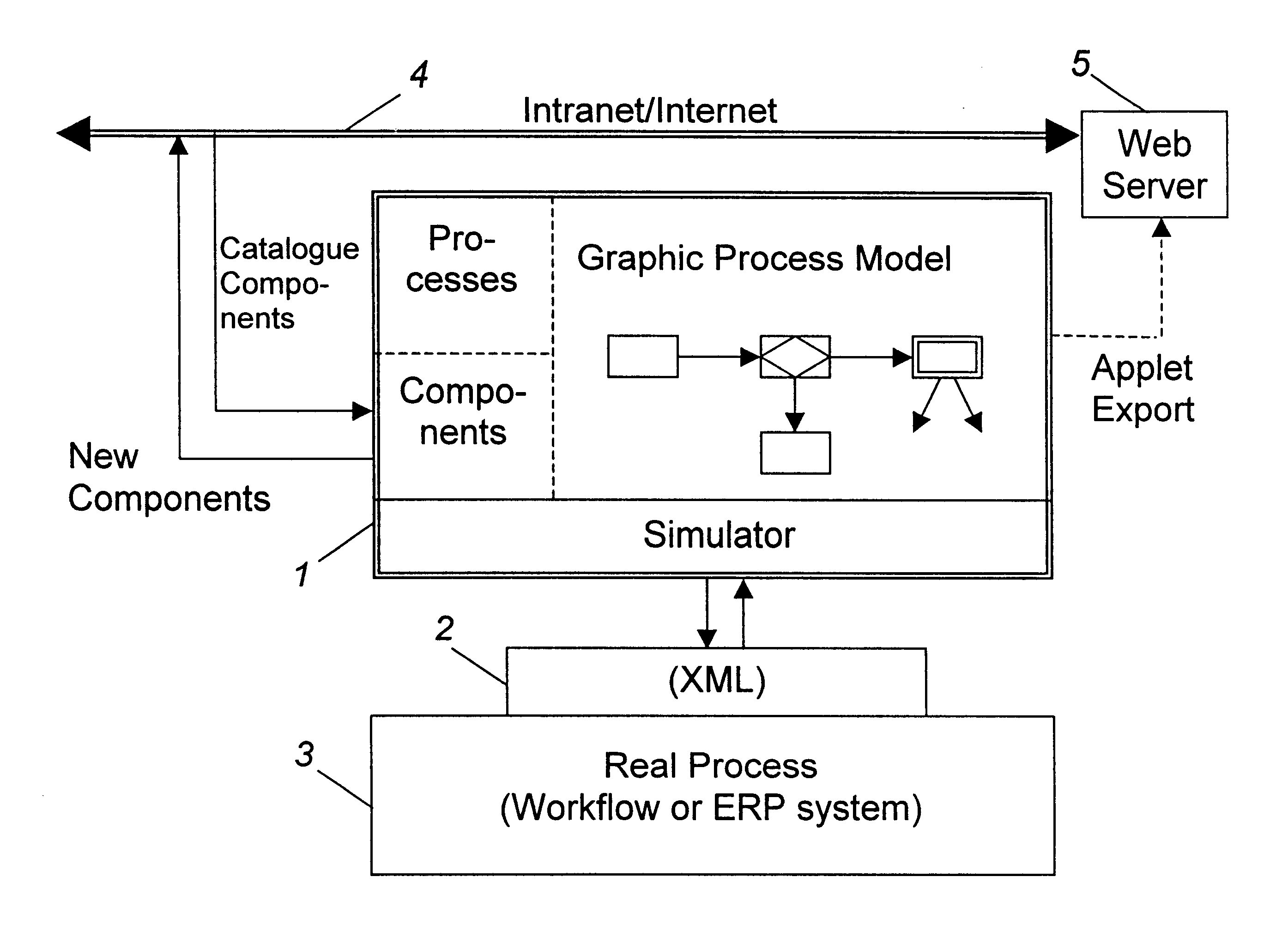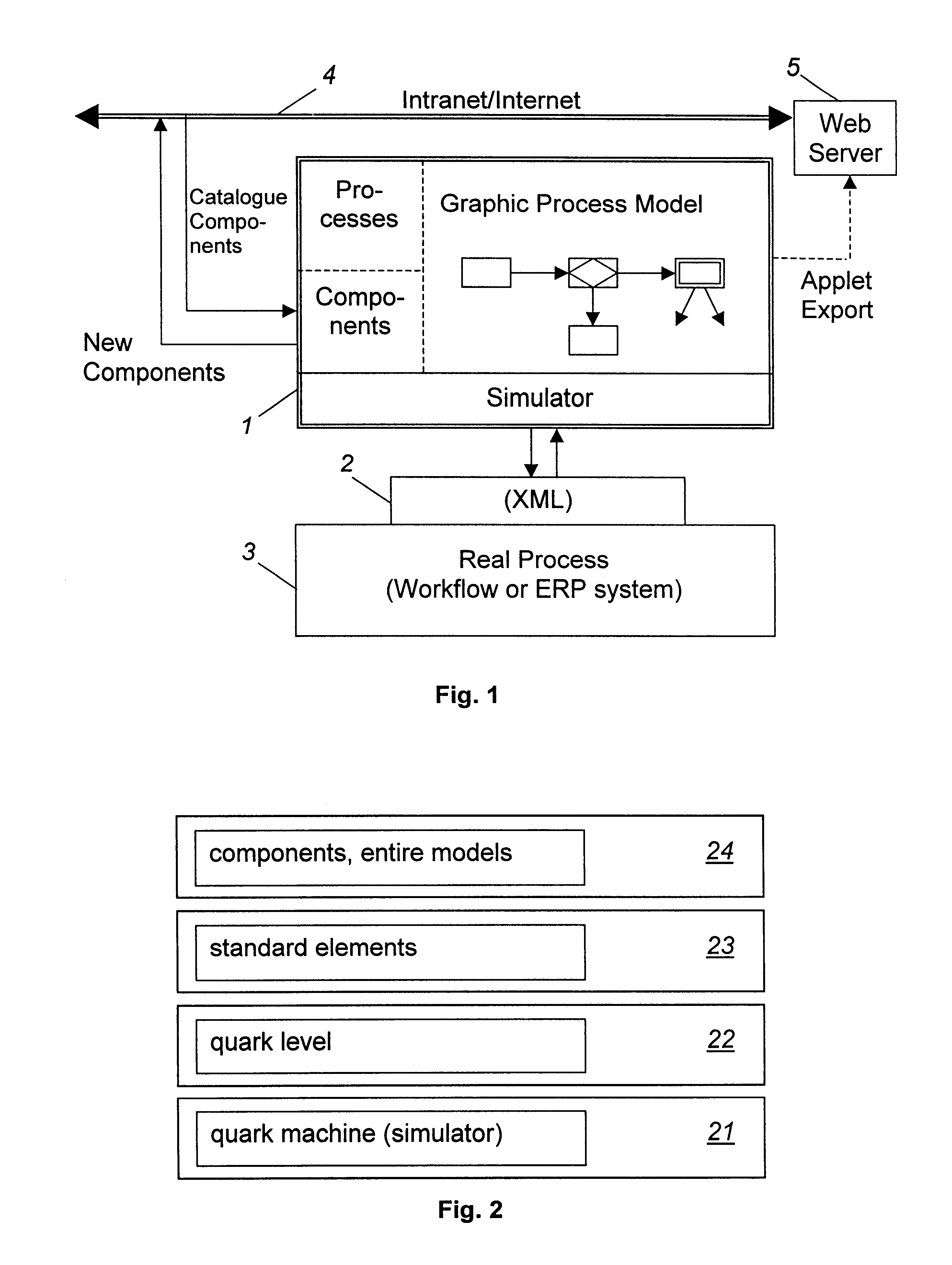Information technology system for the definition, optimization and control of processes
a technology of information technology and process, applied in the direction of automatic controllers, programme control, instruments, etc., can solve the problems of avoiding the need for expensive and thus inefficient data conversion
- Summary
- Abstract
- Description
- Claims
- Application Information
AI Technical Summary
Benefits of technology
Problems solved by technology
Method used
Image
Examples
Embodiment Construction
In the following, an embodiment of the invention is described together with associated drawings. In these show:
FIG. 1 an overview of a system according to the invention;
FIG. 2 various abstraction levels of the tool according to the invention;
FIG. 3 a standard element "step" defined by means of a "quark"; and
FIG. 4 a representation of the process on a display.
Below, an example of process modelling and simulation by means of the tool according to the invention is described. The formalism on which the new tool is based has its origin in the Petri nets, but this is only mentioned for the sake of completeness: it is not required for an understanding of the function. Such Petri nets are for example described by W. Reisig in "Petrinetze" [Petri nets], Springer Verlag Berlin, Heidelberg, 1982.
For the sake of clarity, a list of reference symbols has been provided.
FIG. 1 is a diagrammic overview of a system according to the invention. The process model runs in the simulator 1 which is usually...
PUM
 Login to View More
Login to View More Abstract
Description
Claims
Application Information
 Login to View More
Login to View More - R&D
- Intellectual Property
- Life Sciences
- Materials
- Tech Scout
- Unparalleled Data Quality
- Higher Quality Content
- 60% Fewer Hallucinations
Browse by: Latest US Patents, China's latest patents, Technical Efficacy Thesaurus, Application Domain, Technology Topic, Popular Technical Reports.
© 2025 PatSnap. All rights reserved.Legal|Privacy policy|Modern Slavery Act Transparency Statement|Sitemap|About US| Contact US: help@patsnap.com



